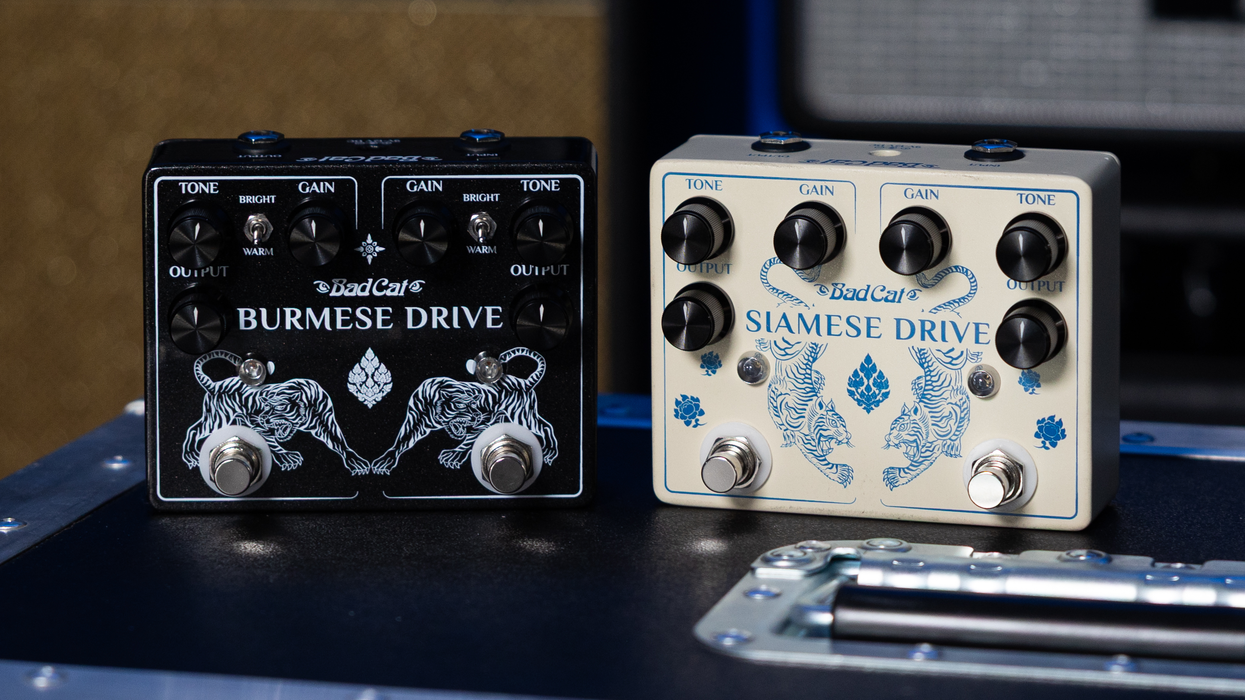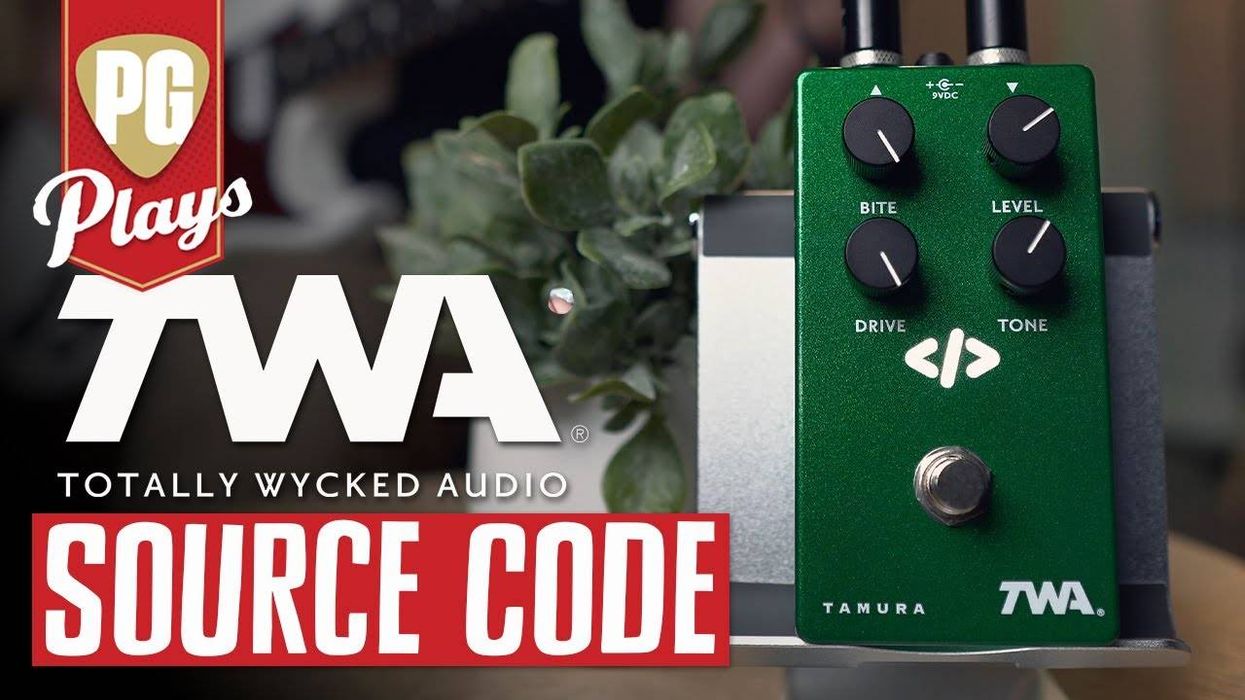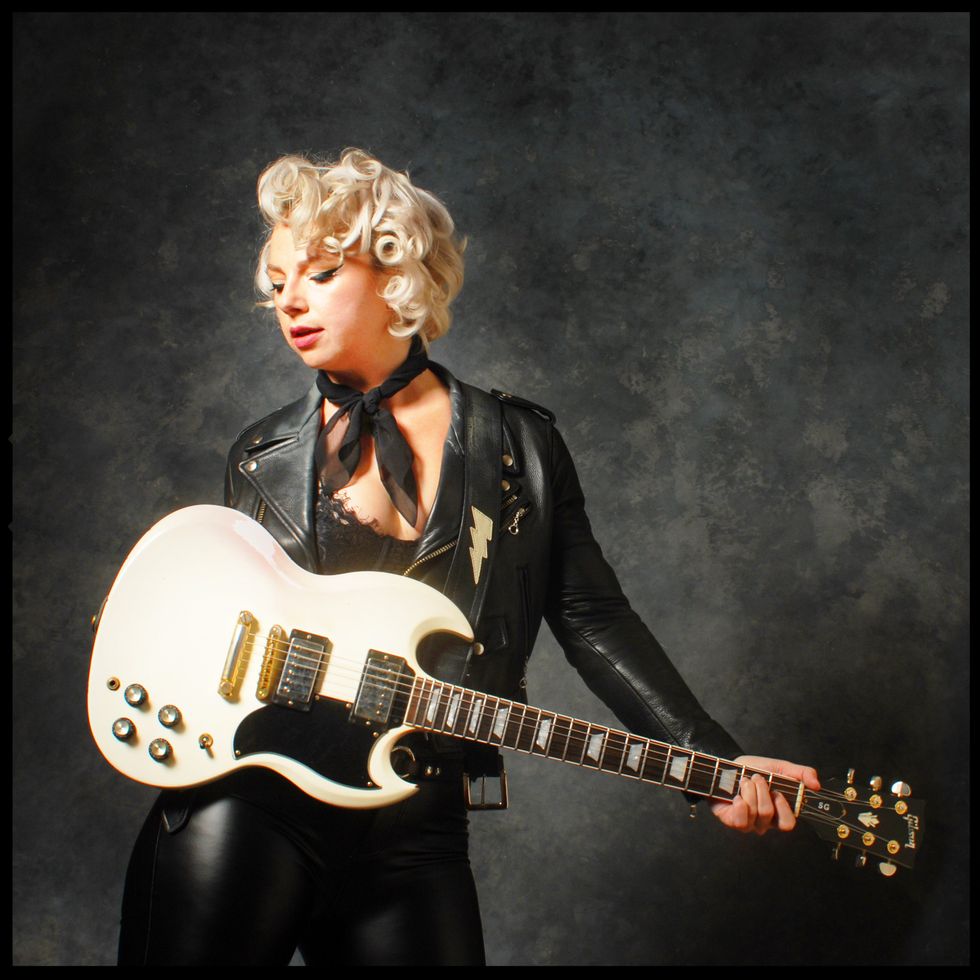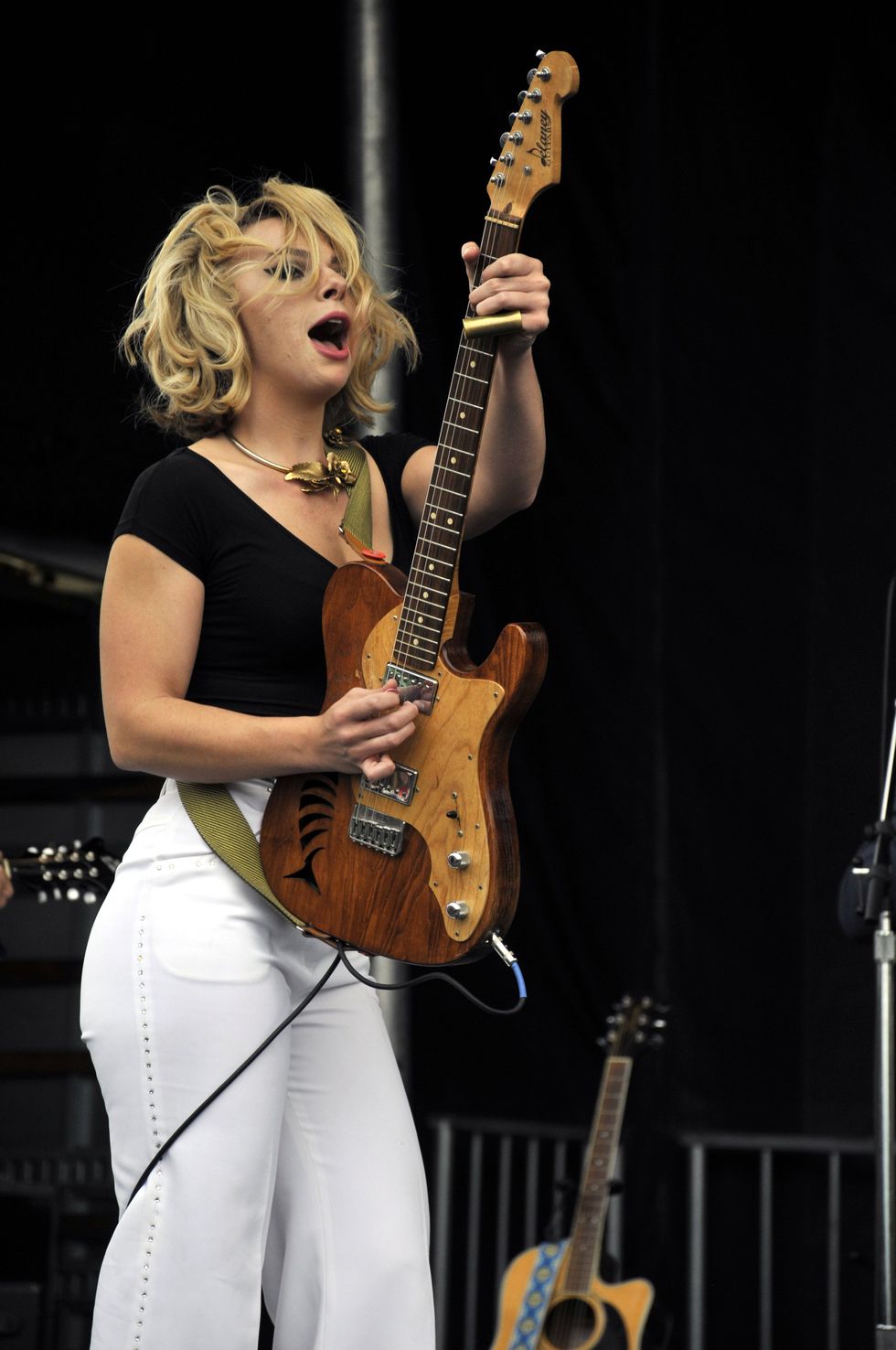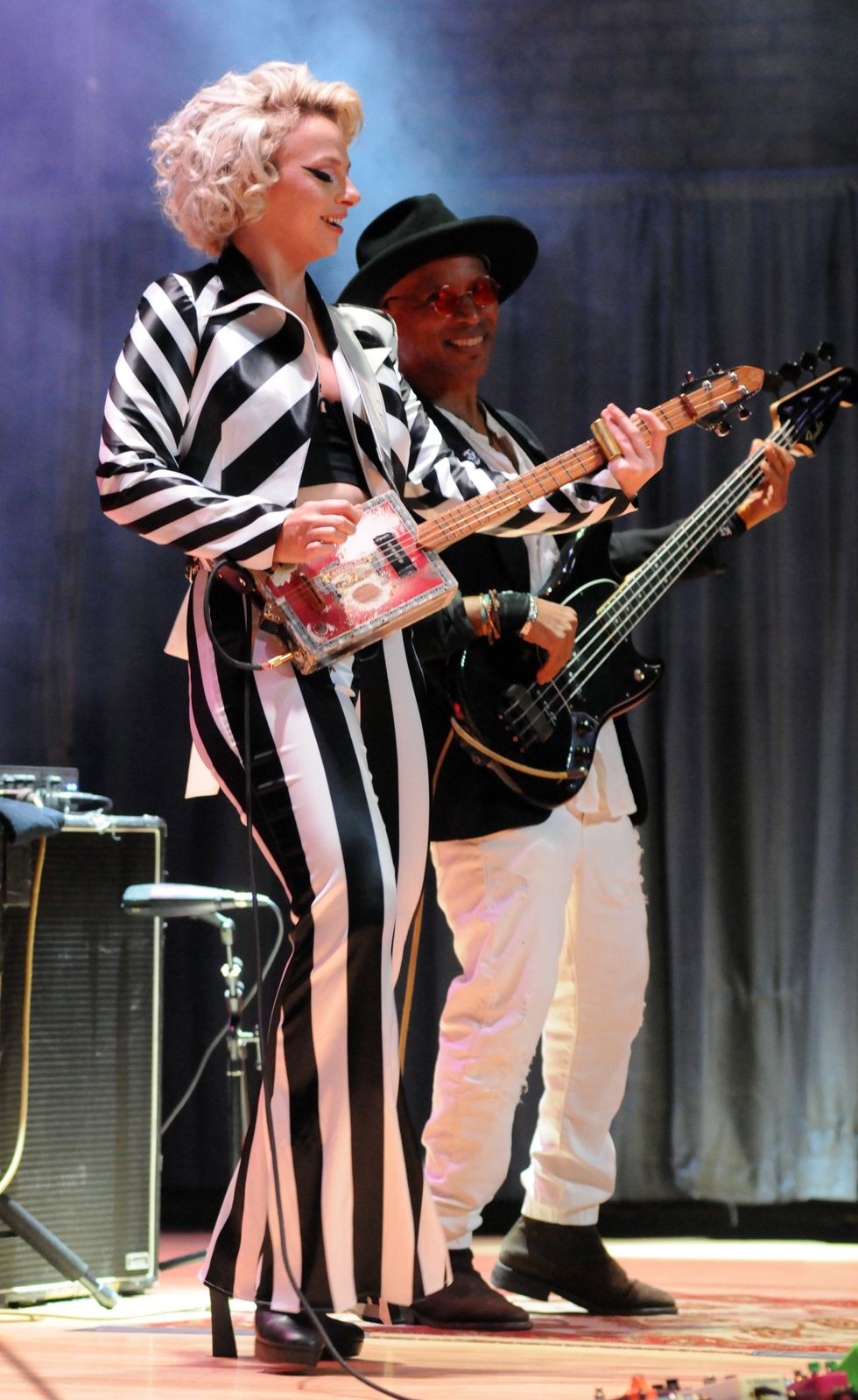Chops: Intermediate
Theory: Intermediate
Lesson Overview:
• Learn the principles of quartal harmony.
• Play three- and four-note quartal voicings.
• Construct quartal harmony based on the Dorian mode.
Click here to download a printable PDF of this lesson's notation.
When we start to think of how chords are constructed, we usually think in terms of triads and 7th chords, which are based on thirds. This is called tertian harmony, or harmony based on thirds. In this lesson we will be looking at the semi-ambiguous world of quartal harmony, which consists of chords derived from fourth intervals.
Quartal harmony is a style associated with piano players such as Bill Evans, Herbie Hancock, and McCoy Tyner. The theory behind it is simple: Instead of building harmony by stacking major or minor thirds, we use fourths. For example, in the key of C, we could use C–F–Bb–Eb for a Dorian sound based out of a Bb major scale. You can then move up each scale degree of C Dorian constructing each voicing in fourths. Sounds easy right? Well, it is and I have done the work for you over a major and minor blues progression. Before we get to that, why would you want to do this?
The answer to me is simple: It’s yet another way to be improvisational with your harmonic vocabulary. These voicings are what you might call “open” sounding, meaning they don’t clearly say minor, major, or dominant. They also sit nicely on top of major, minor, and dominant chords. I also think of them as more melodic harmony. You’re less likely to play one voicing in one place for any length of time—you’ll feel the urge to move quartal voicings around.
In Fig. 1, you can see the basic quartal harmony voicings in the key of G Dorian—which we will use later over the Im chord in a G blues. You’ll notice these voicings are on strings 4–1. Try to visualize the G Dorian scale (G–A–Bb–C–D–E–F) going up the 4th string. In the first voicing, we have G–C–F–Bb, all perfect fourth intervals, but not all fourths are perfect. In the third voicing we have a Bb–E, which is an augmented fourth. For you theory hounds out there, you will remember that an augmented fourth is another name for a diminished fifth, or tritone. In the fourth voicing of the example this happens between the 2nd and 1st strings (giving us Bb and E, respectively), and again in the last voicing between the 3rd and 2nd strings (again yielding Bb and E).

We apply the same idea to C Dorian (C–D–Eb–F–G–A–Bb) in Fig. 2. These voicings will be used over the Cm7 or IVm chord in a G minor blues progression. Because of the layout of this key on the guitar, I’ve opted to keep the fingerings below the 12th fret. These I think are the most practical in the context we’re using them. Finally, we transpose these quartal shapes to D Dorian (D–E–F–G–A–B–C) in Fig. 3, which will be the V chord. Again, I have kept the voicings below the 12th fret.


We finally get to some music in Fig. 4. Here I have outlined a G minor blues progression and used the various Dorian voicings from the previous three examples to harmonize each chord. Remember, there is no right answer here, I am just giving you one example of how these can be used.
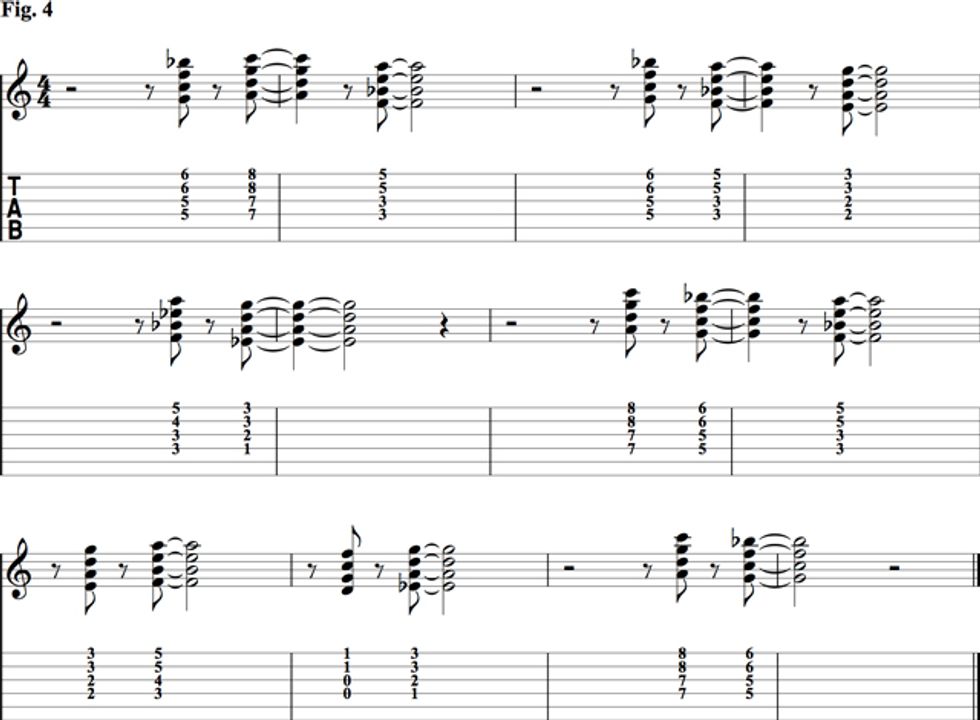
Now that the minor shapes and sounds are out of the way, we can see how to use quartal voicings over a major-sounding blues progression. The theory doesn’t really change and we have already done a lot of the prep work. Just need to keep going. In a G blues progression, the I chord will be G7—the V in the key of C. If we start on the second degree of the key of C, which is D, we have a D Dorian scale. Still with me? Good. Remember all the diatonic modes in a key use the same notes, it just matters where you start and what notes you emphasize.
In the following examples, we will keep the voicings to three notes and only on the 4–3–2 string set. In this set of voicings, the lowest note of each chord functions as the root. We could keep going but I have chosen to keep them in this range to show the difference in sound. In this key, our tritone happens between F and B, which you can see in the fourth and seventh voicings of Fig. 5.

For the IV chord (C7), we take this entire concept and transpose it up a fourth. Since C7 is the V chord in the key of F, we move to the second degree (G) in the key of F and base our Dorian shapes from there (Fig. 6). Again, I have started these with the root of the C7 chord in the bass.
Like before, we move everything up a whole-step for our voicings over the V chord (D7) in Fig. 7.
This might be confusing to a lot of you right now, but you should know that you don’t have to understand the theory completely to start using these voicings. Use them first and then as you understand the theory better, try developing your own set of voicings to explore. Now, we take the previous three examples and use them over a blues progression in Fig. 8.

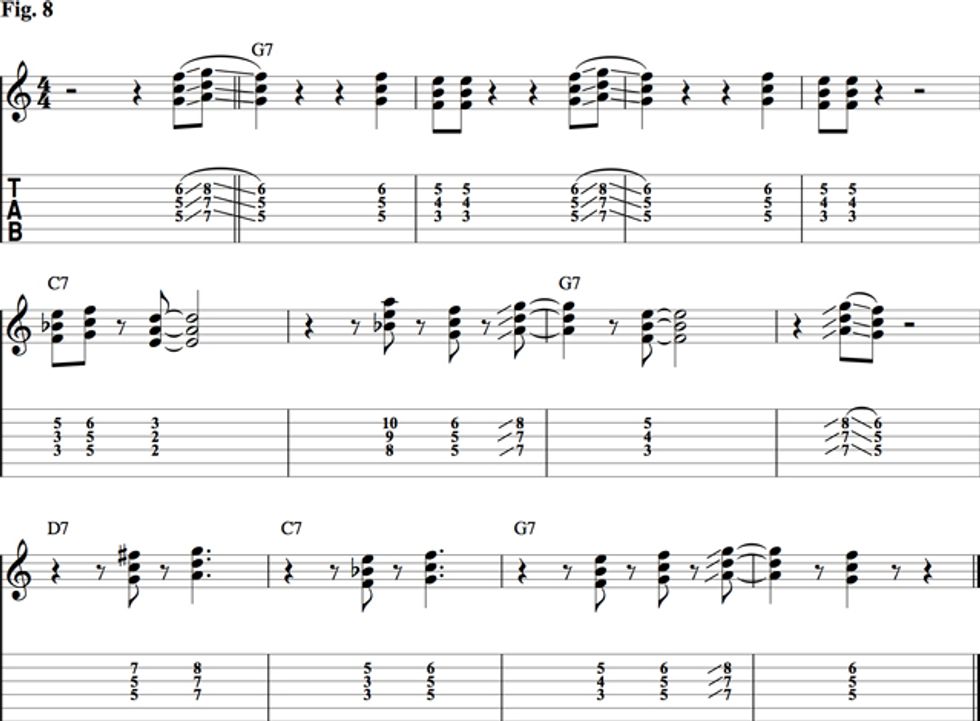
These voicings are a very cool way to improvise harmonically around a general key center. As musicians, we always want to be adding to a musical vocabulary to keep things interesting for both the listener and ourselves, and this technique does just that. The most popular use of this is in the tune “So What” from Miles Davis’ Kind of Blue recording. Check it out.
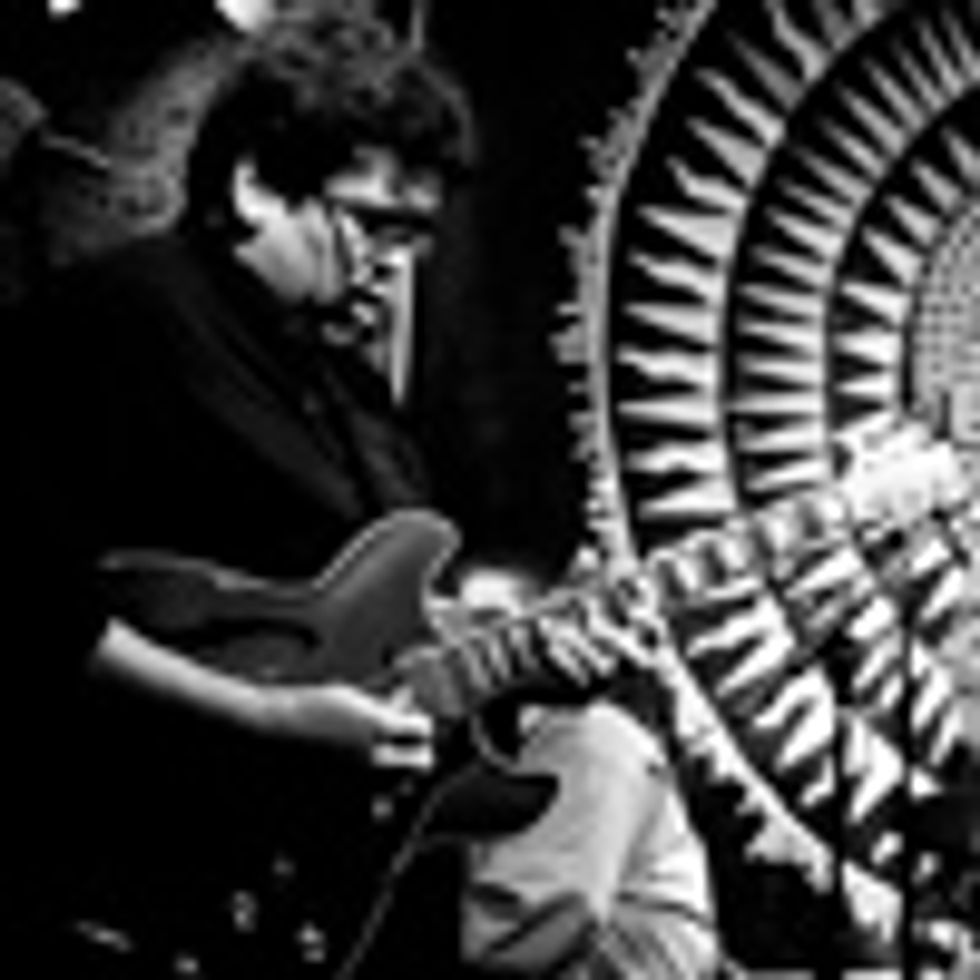 Dennis McCumber has been a guitar instructor and performer
for more than 20 years. He holds a Bachelor’s degree in music
education from The College of Saint Rose.
Dennis performs
regularly in the New York City area with various rock, blues, and funk bands, and occasionally as a classical soloist.
In addition to performing, Dennis has been a middle school
music teacher in the Bronx for the past 12 years. While
teaching in the Bronx, he was given a guitar lab by VH1
Save the Music and a keyboard lab from the radio station
Hot97 Hip Hop Symphony. Dennis has been an instructor at
the National Guitar Workshop since 1996, where he teaches
Blues, Funk, and Rock. Find out more at dennismccumber.com.
Dennis McCumber has been a guitar instructor and performer
for more than 20 years. He holds a Bachelor’s degree in music
education from The College of Saint Rose.
Dennis performs
regularly in the New York City area with various rock, blues, and funk bands, and occasionally as a classical soloist.
In addition to performing, Dennis has been a middle school
music teacher in the Bronx for the past 12 years. While
teaching in the Bronx, he was given a guitar lab by VH1
Save the Music and a keyboard lab from the radio station
Hot97 Hip Hop Symphony. Dennis has been an instructor at
the National Guitar Workshop since 1996, where he teaches
Blues, Funk, and Rock. Find out more at dennismccumber.com.